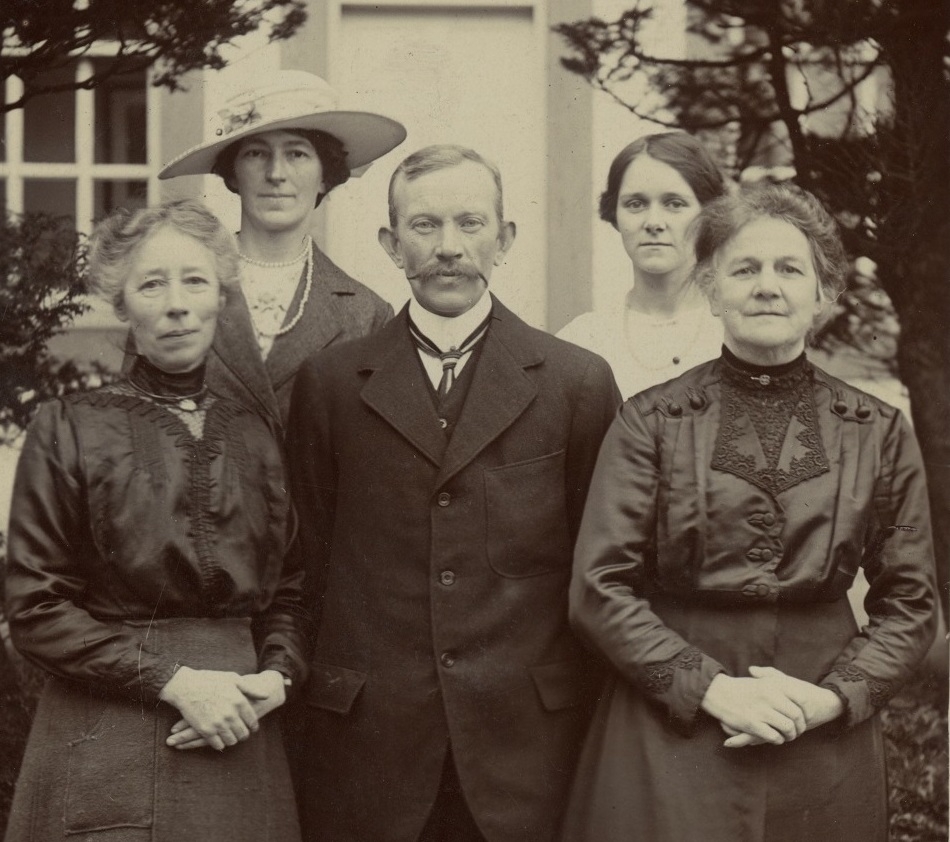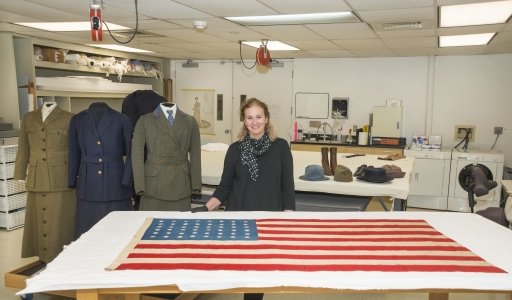A US flag made by Hebridean islanders to honour American soldiers of the Great War who perished in a U-boat attack has travelled back to Islay for WW100 Scotland’s international commemorations taking place on Friday, May 4.
The troopship SS Tuscania was torpedoed in the waters between Scotland and Northern Ireland on 5 February 1918, with the loss of more than 210 US troops and British crewmen.
On the eve of the funerals for those found washed ashore on Islay, five islanders set to work on sewing the Stars and Stripes so that the Americans could be laid to rest under their own flag.
Afterwards, it was sent to President Woodrow Wilson in Washington, where it’s now in the care of the Smithsonian’s National Museum of American History.
Display
The flag will be displayed at the Museum of Islay Life, in Port Charlotte, in the coming months before returning to the US.
“The flag embodies an amazing story and we are proud to have been its stewards,” said Richard Kurin, the Smithsonian’s Ambassador at Large.
“We are prouder still that the flag now returns home to be exhibited on Islay where it can invoke in the current generation an appreciation of how their forebearers so respected those brothers in battle who’d washed up upon their shores, offering hospitality and healing to the survivors, and providing a last measure of honour to the fallen soldiers and crew.”
 The five islanders (from left) – Catherine McGregor, Jessie McLellan, John McDougall, Mary Cunningham, Mary Armour – who worked into the small hours to have the flag ready for the first of the funerals (Photo courtesy of the National Museum of American History)
The five islanders (from left) – Catherine McGregor, Jessie McLellan, John McDougall, Mary Cunningham, Mary Armour – who worked into the small hours to have the flag ready for the first of the funerals (Photo courtesy of the National Museum of American History)
Care was to taken to get the detail of the Stars and Stripes right, as Hugh Morrison, the Laird of Islay Estate, explained in a letter to the Smithsonian:
“Mrs Forbes, the wife of the then factor of Islay estate, had an Encyclopaedia where John MacDougall,the estate joiner, got all information as to the size of the Flag and the correct number of stars and stripes. John made a plan from which Miss Mary Armour and her helpers, Jessie MacLellan, Mary Cunningham and Catherine MacGregor, were able to cut the cloth to the right dimensions. There was no time to send for suitable material and the stars and stripes were made of white cotton calico, the blue part of figured calico turned outside in; and the red stripes of Turkey twill, all procured at the local merchant’s in Bridgend. Jessie MacLellan and her Mother cut the stars and sewed them on the blue.”
Replica
100 years on, a group of islanders has had a taste of that experience. The Islay Quilters have made a replica for use at WW100 Scotland’s National Day of Remembrance events. They commemorate not only the Tuscania, but also another troopship HMS Otranto – sunk in a collision off Islay in October 1918 – and more than 200 men from Islay and neighbouring Jura who died in the First World War.
Marian Senior, a member of the Islay Quilters, said: “As we sewed, we reflected on what it must have been like on the island 100 years ago, making the flag in the same spot that it was done so long ago but under very different conditions. It will be a real privilege to see the original flag and to have our replica used in the commemorations.”
Read more here in Centenary News about the loss of SS Tuscania.
The 100th anniversary of the Tuscania’s loss was marked in February 2018 with community remembrance services on Islay. Further events will take place on October 6 to commemorate HMS Otranto. For details see WW100 Islay.
Images courtesy of Richard Strauss/National Museum of American History (Stars and Stripes); NMAH (archive photo)
Source: WW100 Scotland
Posted by: CN Editorial Team
